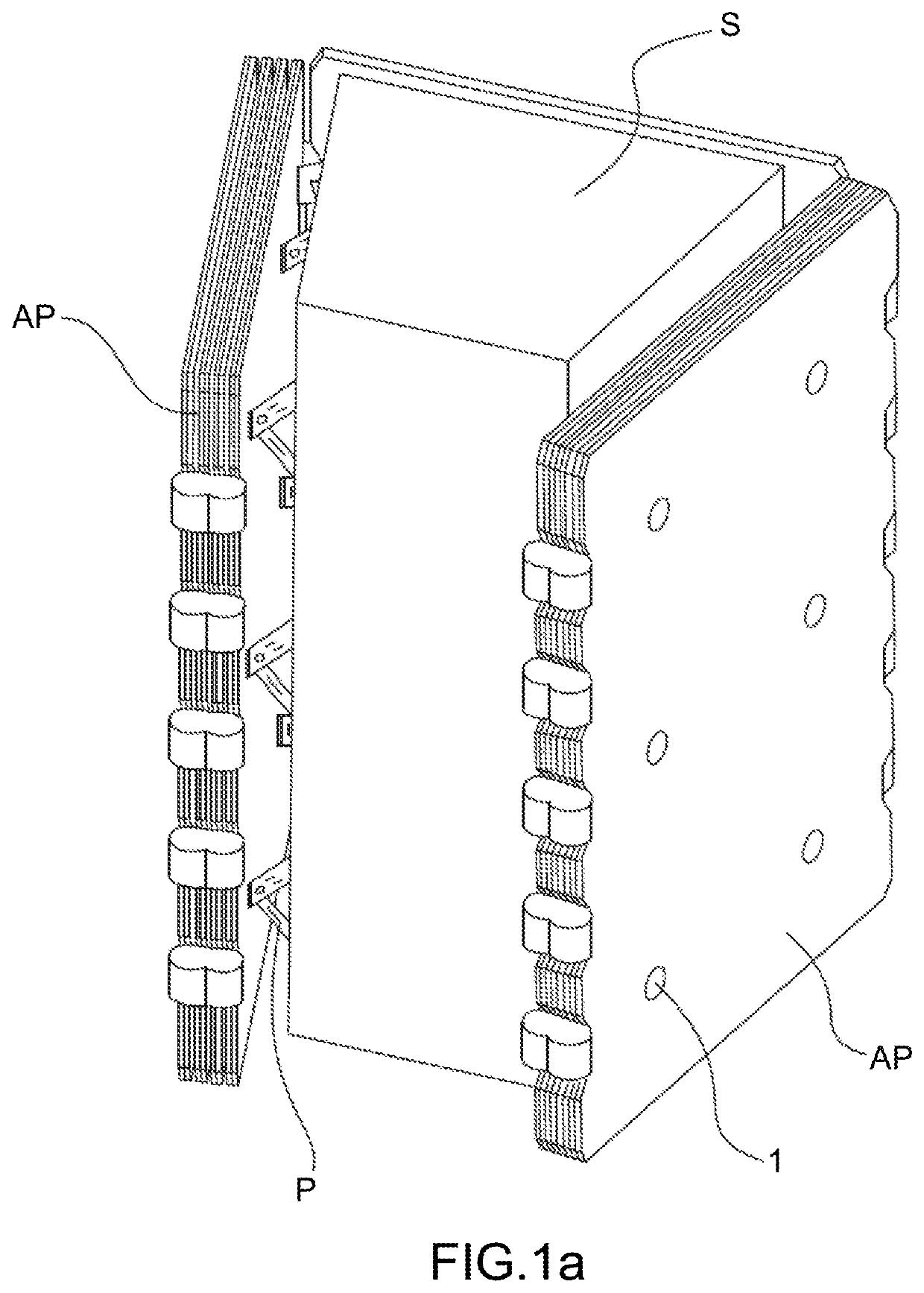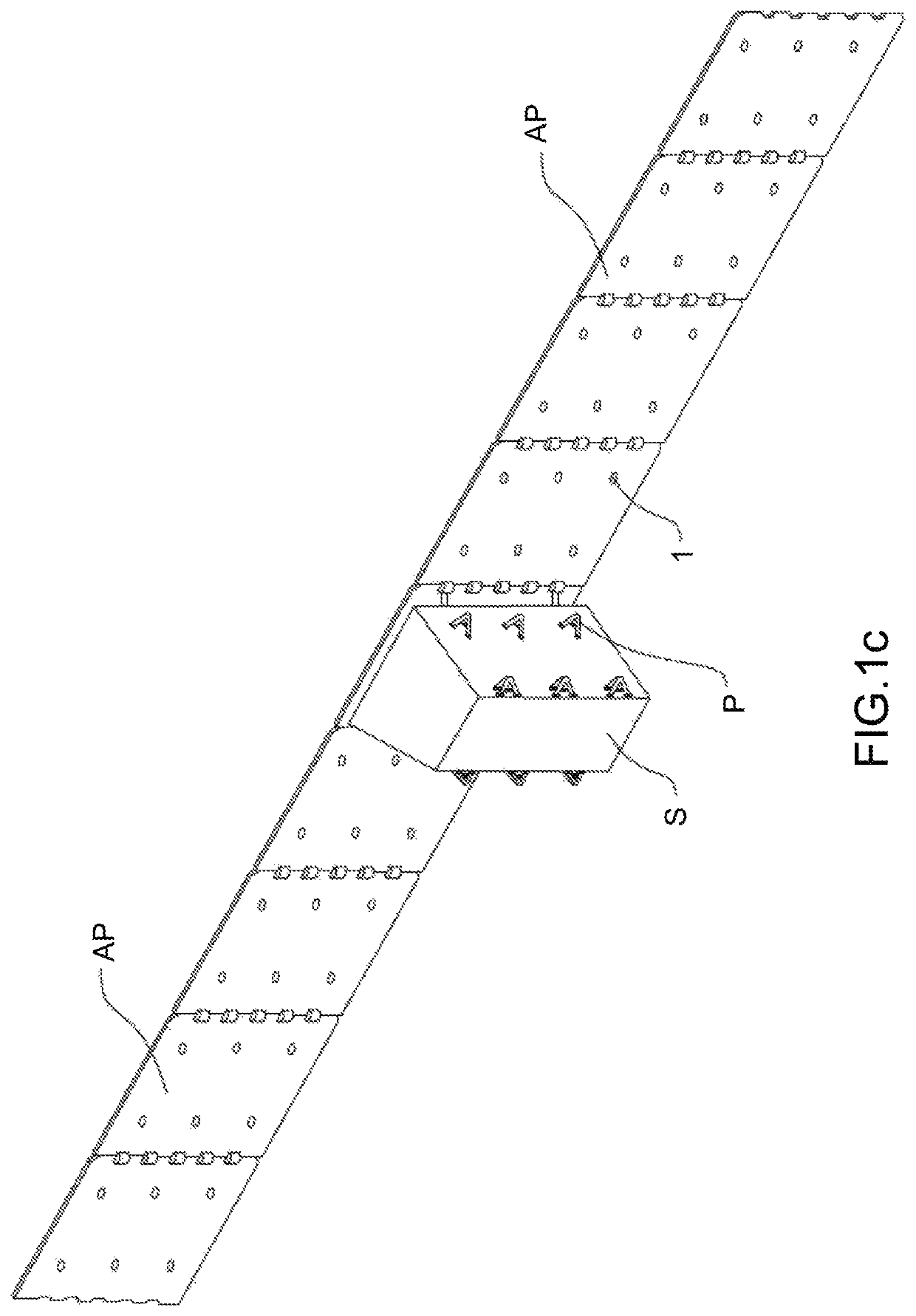Device for retaining and releasing appendages
a technology for retaining and releasing devices, applied in the field of aerospace, can solve problems such as large geometrical defects of tie rods, generating dynamic defects, and inclination or delocalization defects, and achieve the effect of limiting shocks and simple and robust solutions
- Summary
- Abstract
- Description
- Claims
- Application Information
AI Technical Summary
Benefits of technology
Problems solved by technology
Method used
Image
Examples
Embodiment Construction
[0038]The following description relates to a satellite and to the deployment of its appendages. It is clearly understood that the invention is not limited to the aerospace field and may be used in other fields where appendages can be deployed. These may be terrestrial antennas, underwater sensors, etc.
[0039]The objective of FIGS. 1a, 1b, 1c is to show in a very simple manner an example of a satellite having deployable spacecraft appendages. In these three figures there is represented a satellite consisting of a body S with spacecraft appendages AP such as solar generators on respective opposite sides of the body S. In FIG. 1a, the spacecraft appendages AP are in the stowed position. Here each of the spacecraft appendages AP consists of four panels folded against one another and held in place by an appropriate device. Here that appropriate device includes tripods P on which the folded spacecraft appendages AP rest, each tripod P cooperating with a device that is not shown consisting ...
PUM
 Login to View More
Login to View More Abstract
Description
Claims
Application Information
 Login to View More
Login to View More - R&D
- Intellectual Property
- Life Sciences
- Materials
- Tech Scout
- Unparalleled Data Quality
- Higher Quality Content
- 60% Fewer Hallucinations
Browse by: Latest US Patents, China's latest patents, Technical Efficacy Thesaurus, Application Domain, Technology Topic, Popular Technical Reports.
© 2025 PatSnap. All rights reserved.Legal|Privacy policy|Modern Slavery Act Transparency Statement|Sitemap|About US| Contact US: help@patsnap.com



